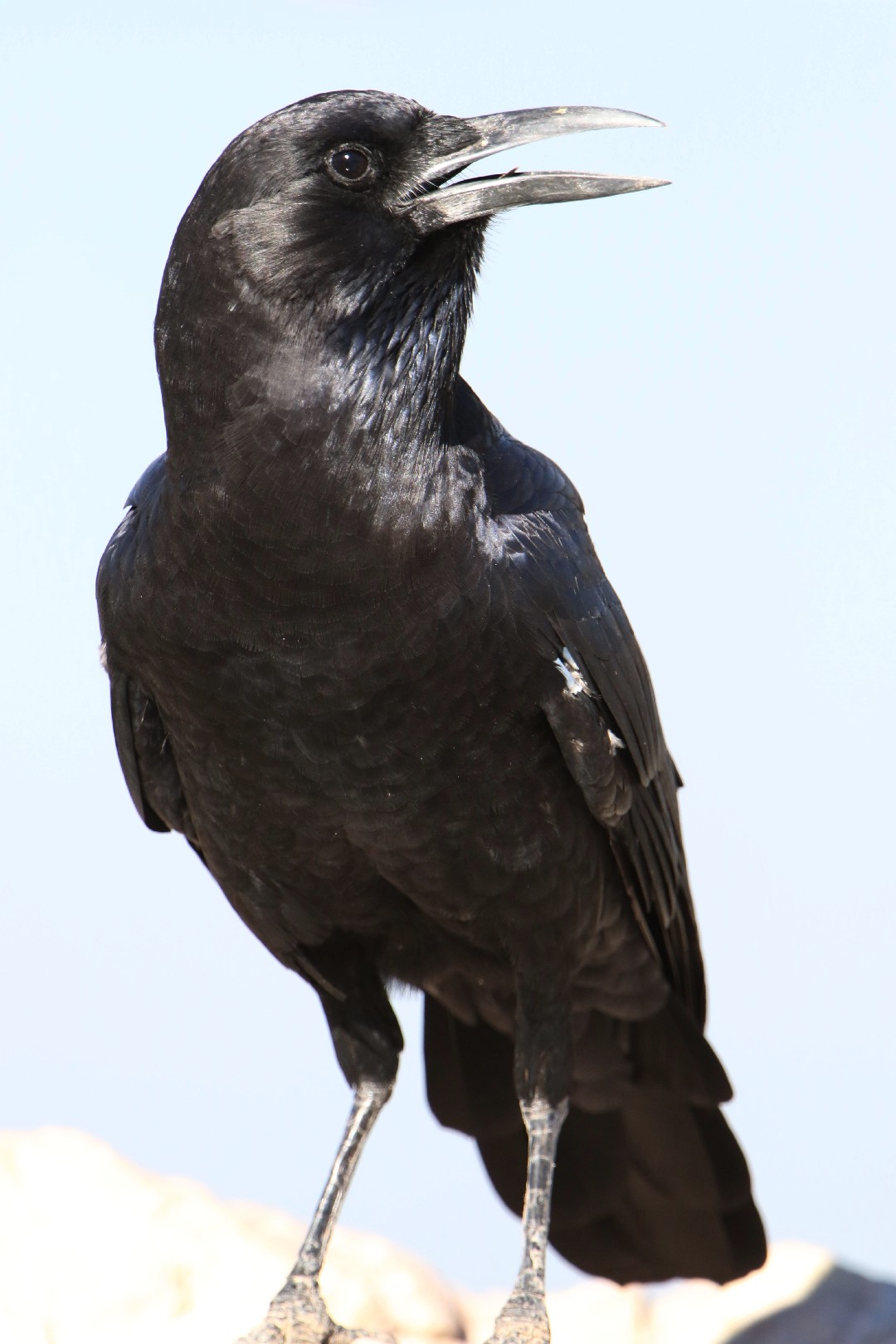Cape Crow
A species of Crows, Also known as Cape Rook Scientific name : Corvus capensis Genus : Crows
Cape Crow, A species of Crows
Also known as:
Cape Rook
Botanical name: Corvus capensis
Genus: Crows
Content
Description General Info
Description
The Cape crow or black crow (Corvus capensis) is slightly larger (48–50 cm in length) than the carrion crow and is completely black with a slight gloss of purple in its feathers. It has proportionately longer legs, wings and tail too and has a much longer, slimmer bill that seems to be adapted for probing into the ground for invertebrates. The head feathers have a coppery-purple gloss and the throat feathers are quite long and fluffed out in some calls and displays. 
Size
50 cm
Nest Placement
Tree
Feeding Habits
Cape Crow opts for a varied diet, consuming seeds, invertebrates, and even vertebrates such as frogs and small reptiles. With a strong bill, cape Crow forages by digging and can kill birds up to a pound. It also scavenges under mammal droppings for insects and feeds on eggs, chicks, and fruits.
Habitat
The cape Crow is typically found in open habitats across two major regions in Africa, embracing a variety of landscapes including grassland, moorland, and agricultural areas with nearby trees or woodlands for nesting. The species is versatile, occupying territory from upland farmlands peppered with trees to riverine trees in semi-deserts, and from acacia savannas to alpine meadows. These birds range from sea-level in certain southern localities to high elevations, being recorded at altitudes between 900 m and 2500 m, with variations depending on the region.
Dite type
Omnivorous
General Info
Feeding Habits
Bird food type
Distribution Area
This species occurs in two large separate regions of the African continent. One form ranges from the Cape at the southern tip of Africa up to southern Angola and across to the east coast of Mozambique. The other population occurs in a large area from South Sudan, Ethiopia, Tanzania and Kenya in central east Africa. The more northern population is on average slightly smaller than the southern. It inhabits open grassland, moorland, agricultural areas with some trees or woodland in the vicinity for nesting. It seems to thrive especially in agricultural areas. 
Species Status
Not globally threatened.
Scientific Classification
Phylum
Chordates Class
Birds Order
Perching birds Family
Crows and jays Genus
Crows Species
Cape Crow 